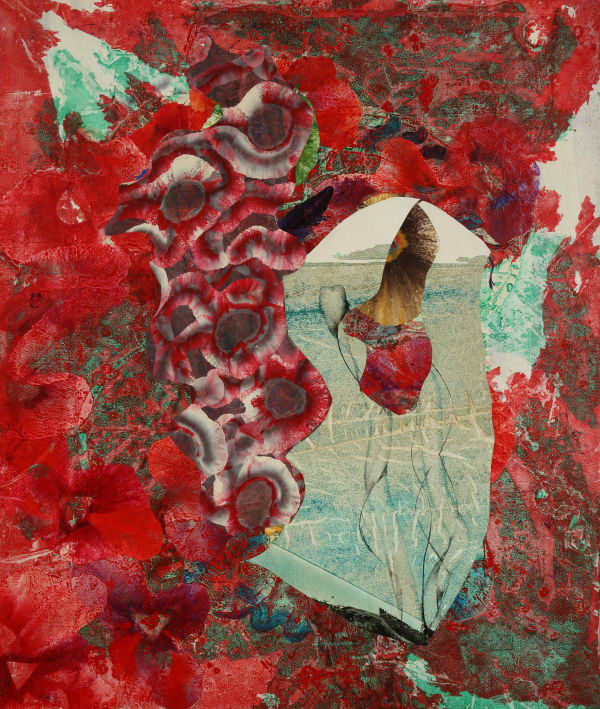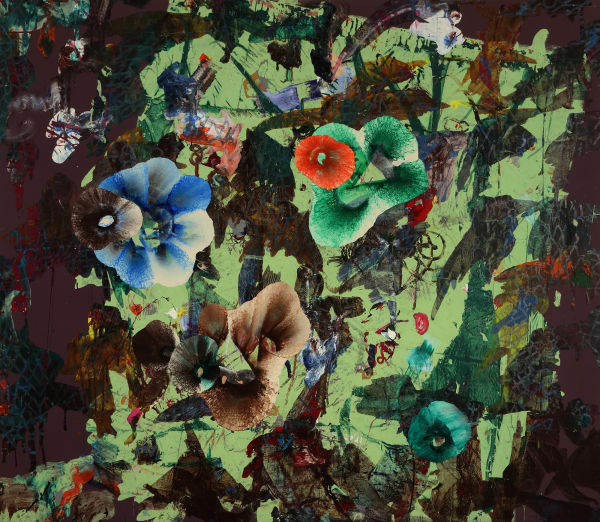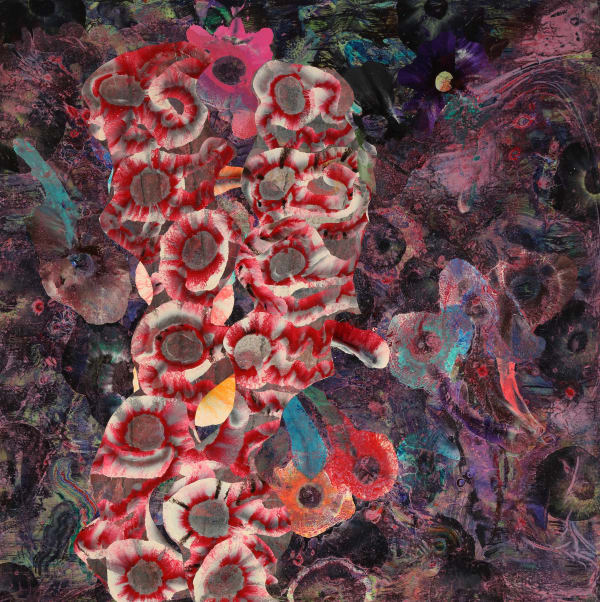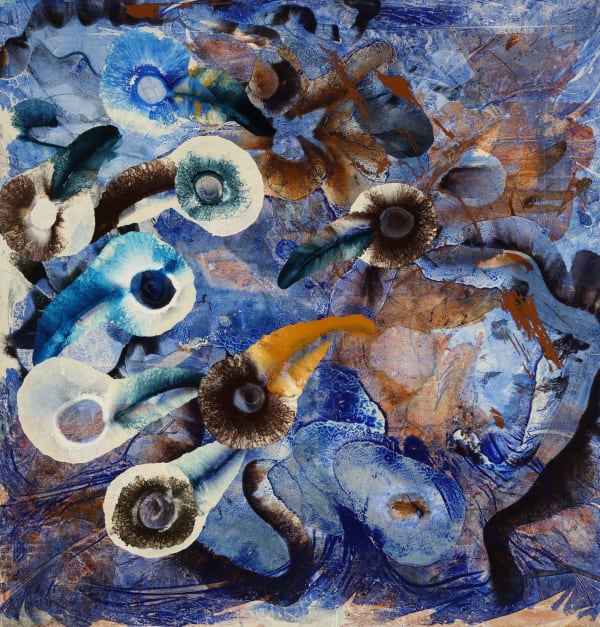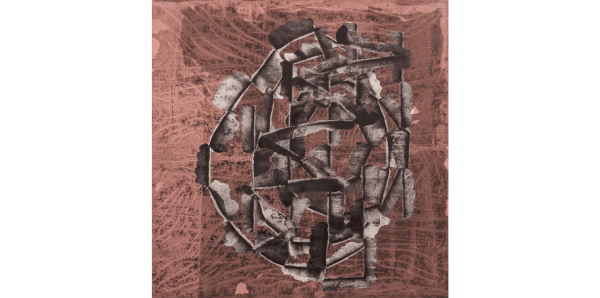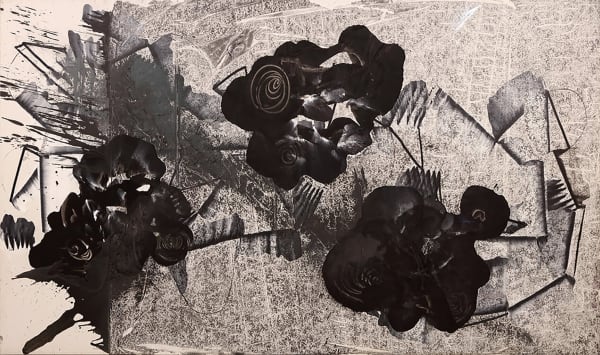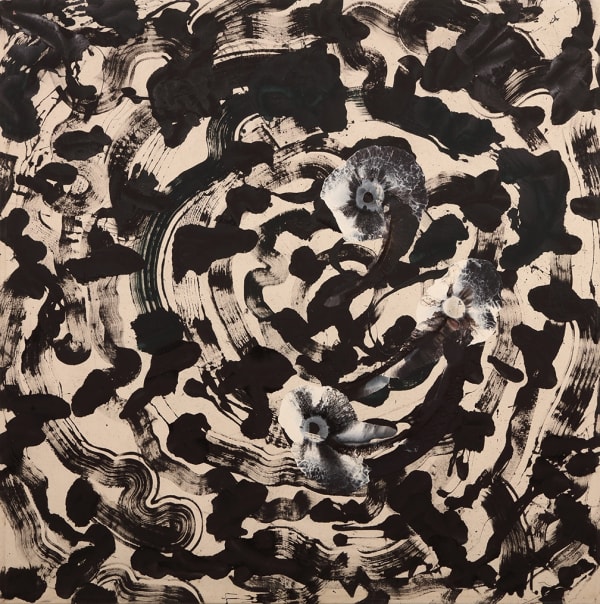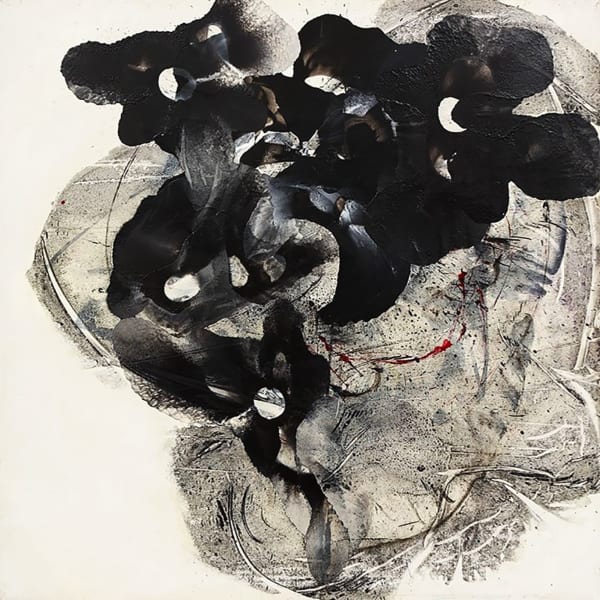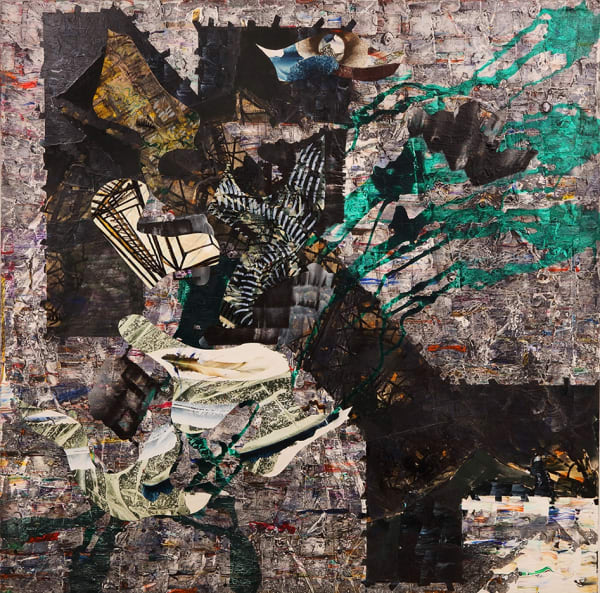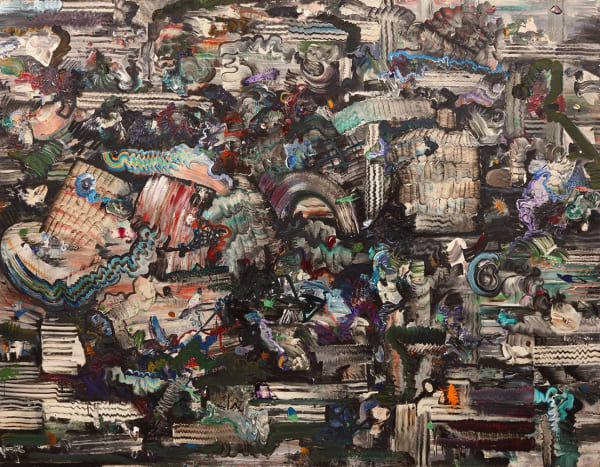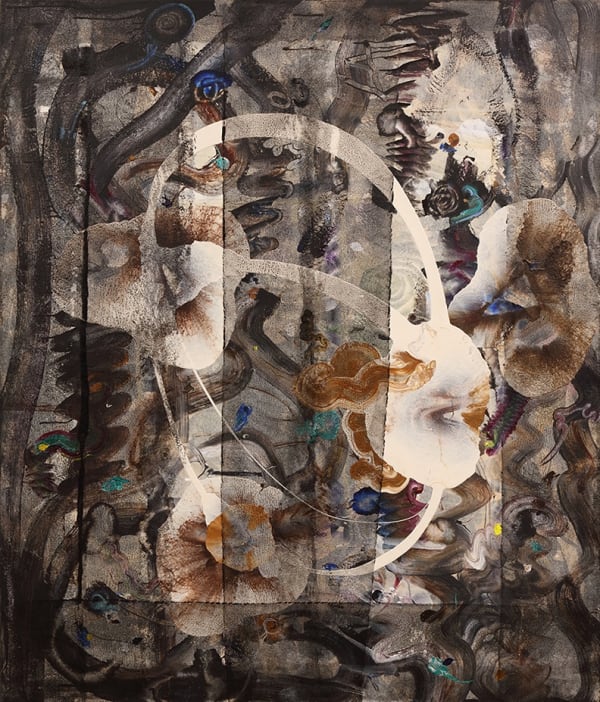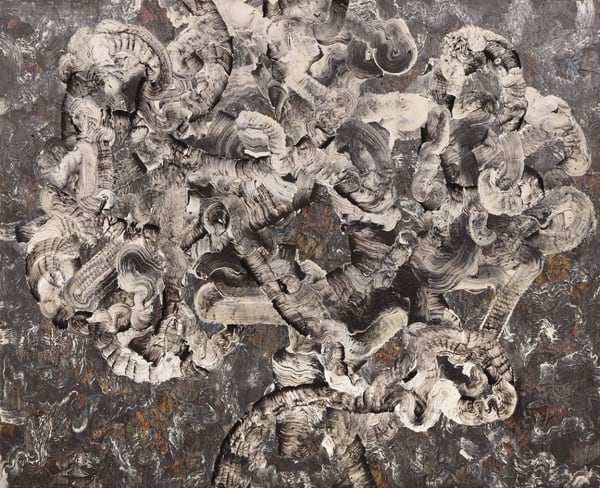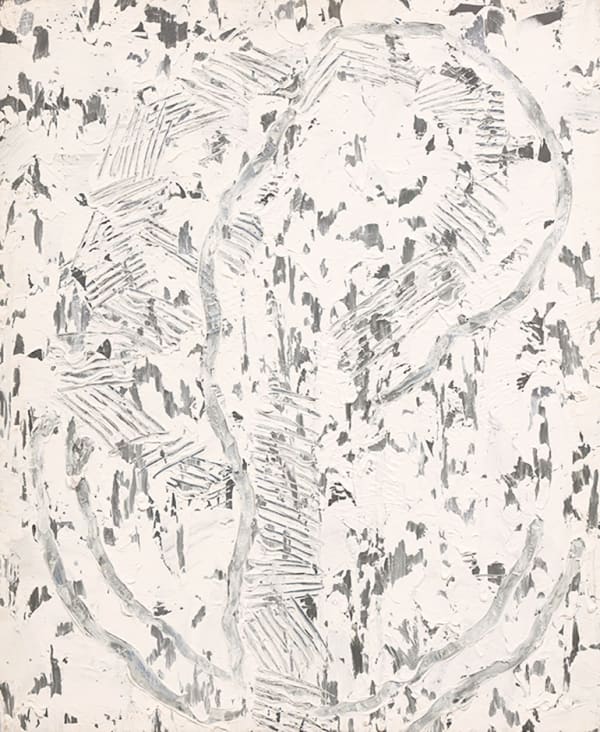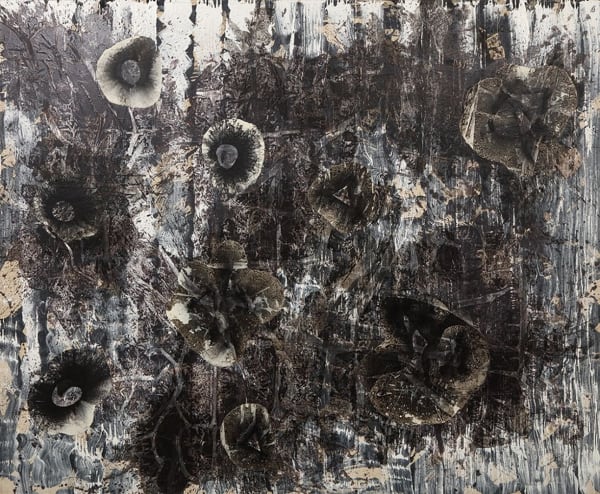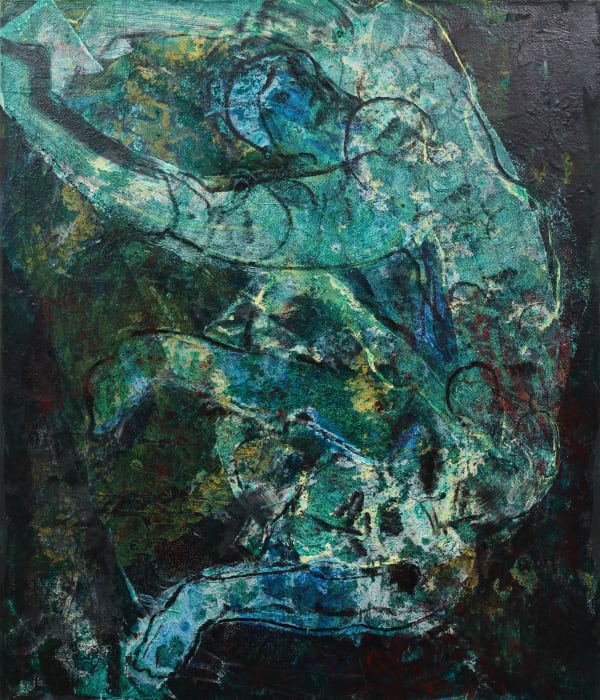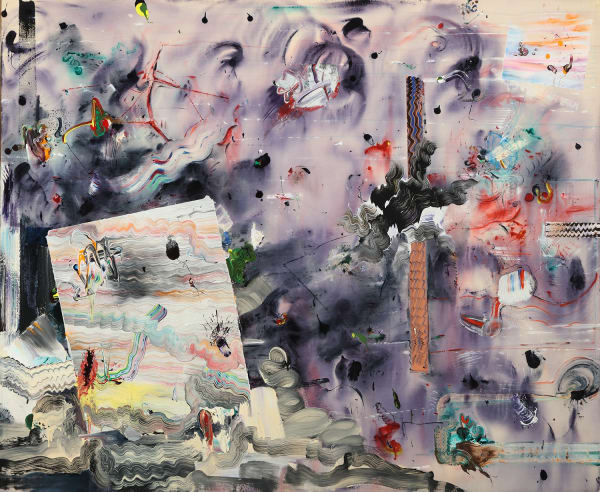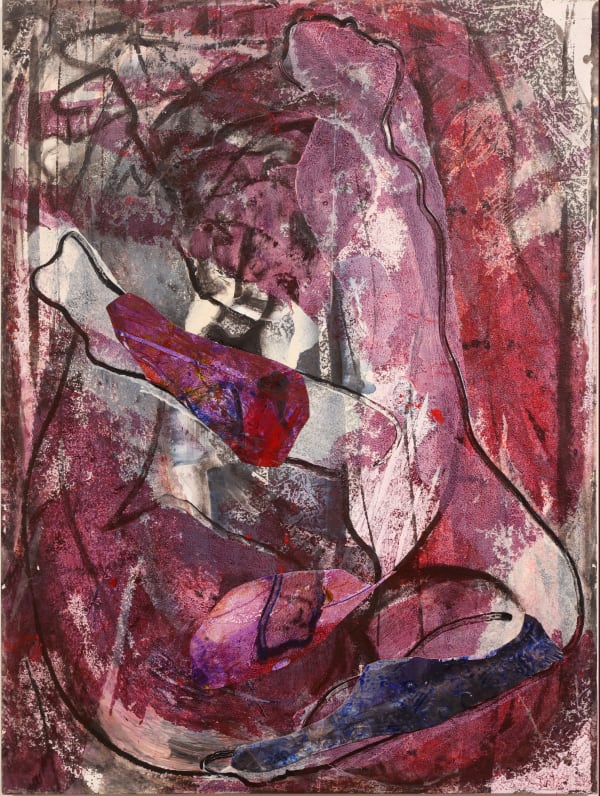Herbert Creecy American, 1939-2003
Overview
"The totality of an artist’s work, as in the case of Herbert Creecy, is difficult to summarize in that the diversity is often what clarifies the painterly sensibility rather than exterior notions of how paintings conform to one another."
- Robert C. Morgan
Herbert Creecy developed a distinct artistic language where each brushstroke and hue embodies a profound interplay between creation and destruction. Born in 1939 in Atlanta, Georgia, and influenced by his extensive travels and immersive studio practice, Creecy's work captures a dynamic blend of abstraction and representation, creating a captivating visual dialogue. His early experiments with "accidental illusionism" in the 1970s, where folded canvases revealed quasi-organic forms, laid the foundation for his mature style, characterized by vibrant, twisting lines and layered textures. Unlike his contemporaries, Creecy's art diverged from mainstream abstraction, focusing instead on a personal vision that integrated natural elements and metaphysical themes. His compositions, often devoid of a stable focal point, invite viewers into an ever-evolving exploration of form and color, reflecting the transient nature of existence. Throughout his prolific career, housed in his expansive studio, Creecy's paintings remained fundamentally abstract yet deeply connected to the natural world, making each piece a testament to his unique and enduring artistic journey.
Works
Biography
Herbert Creecy (b. 1939, Norfolk, VA – d. 2003, Atlanta, GA) studied at the Atlanta College of Art from 1960 to 1964 and S.W. Hayter Atelier 17 in Paris in 1964. He has exhibited widely, including at the Whitney Museum of American Art, New York; the Corcoran Gallery of Art, Washington, D.C.; and the High Museum of Art, Atlanta. Creecy's work is part of numerous prestigious collections, such as the Museum of Contemporary Art of Georgia and the Morris Museum of Art, Augusta, GA. He received various awards, including the Governor’s Grant from the Georgia Council for the Arts in 1988. His solo exhibitions include shows at The Bascom: A Center for the Visual Arts, Highlands, NC, and The Museum of Contemporary Art of Georgia.
Exhibitions
-

Made in Space: Paintings from 1992 - 2001
Herbert Creecy 21 Feb - 19 Apr 2025Johnson Lowe Gallery is pleased to present Made in Space: Paintings from 1992 -2001 , a solo exhibition of never-before-exhibited works by Herbert Creecy. On view from February 21, 2025...Read more -

Sleeping Giants
Herbert Creecy, Thornton Dial, Sam Glankoff 18 May - 1 Jul 2023Thanks to new ways of thinking about art history, especially due to the influence of postmodernist critical ideas, in recent decades, the overlooked or little-known legacies of some of modern art’s most remarkable sleeping giants have been rediscovered and are being appreciated anew. Now honored — and aroused — these artists’ creative spirits and the ideas that inspired them gave rise to distinctive bodies of work for which a new generation of art historians, curators, critics, and collectors have been making room in modern art’s familiar canon and in the broader story of its long, multifaceted evolution.Read more
News
Enquire

